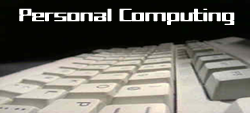 By Reid Goldsborough
By Reid Goldsborough
If you’ve worked with computers for any length of time, you’ve undoubtedly heard the warnings and the recommendations.
Data stored on PCs can disappear in a nanosecond. You need to back up any crucial data you can’t risk losing. Ideally, you should store at least one set of crucial back-up data off-site in case of a fire, flood, or other natural disaster.
The main cause of data loss is hard drive failure, accounting for about 65 percent of it, says Bill Margeson, president of CBL Data Recovery Technologies Inc., a data recovery firm with offices in New York City and San Diego.
Along with regularly making backups, to further protect yourself, there are ways to tell if you’re about to experience a hard disk crash, and there are ways to recover from one yourself, data intact.
Sometimes you can tell that a hard drive is about to fail by the sound it makes. If you begin to hear a high-pitched whining, this could mean that your hard drive’s bearings are on their last legs. You should immediately back up any crucial data you hadn’t previously backed up.
If you hear a grinding sound, your hard drive’s heads are likely scraping across the platters of your hard disk instead of floating just above them. Shut off your computer immediately because each scrape could mean more lost data.
If all you hear are clicking sounds, you may not be able to access the data on your drive, or if you are, some of it may already be gone.
Other times a hard drive will warn you of impending disaster more subtly. You may not be able to find a file you know is on your disk, save a document you’re working on, or move a file to a different location. Or the name of a file may suddenly include strange characters.
If you encounter any of the above problems, the cause may be software related and the problem correctable. With Windows, run the ScanDisk utility that comes with it.
If you’re running Windows XP or 2000, open My Computer, right-click on your hard drive, select Properties then Tools, and click on Check Now. Check both “Automatically fix file system errors” and “Scan for and attempt to fix bad sectors.” If you’re running Windows Me or 98, click the following in order: Start, Programs, Accessories, System Tools, ScanDisk. Then check “Thorough.”
But if ScanDisk reports that your hard disk has more than a few bad physical sectors, this may indicate that your hard drive is failing. Immediately back up any crucial data that you hadn’t previously backed up.
Third-party software utilities, such as Symantec’s SystemWorks (www.symantec.com) and VCOM’s SystemSuite (www.v-com.com), include tools that can monitor the internal diagnostic capabilities of newer hard drives, which is another way to check for looming problems.
If your hard drive does fail, provided you’ve made recent backups and tested those backups to ensure they’re good, all you’ll typically lose is time.
In an organizational setting, this often means contacting your IT department to install a replacement hard drive. In a home office or home setting, you can have a local computer repair shop do this for you, or if you’re handy, you can do it yourself.
New hard drives continue to expand in capacity while they decrease in price per storage unit. Today typical hard drives range in storage capacity from 80 gigabytes to 160 gigabytes and cost from $100 to $300. Top-rated manufacturers include Maxtor, Western Digital, and Seagate.
After the new hard drive is installed, you’ll have to reinstall and reconfigure your software, if you’ve backed up just your data, and restore your data from the backup media.
A faster way to get back on track involves a hard-drive technology known as RAID, which stands for Redundant Arrays of Independent Disks. With some RAID setups, you can replace a failed hard drive without even turning off the computer.
RAID is typically used with the server computers that feed programs and data to the multiple PCs of local area networks. But RAID can be used with a stand-alone PC too. With RAID level 1, whenever you store data onto your main hard drive, the RAID controller card or chip mirrors that data onto a second hard drive.
Fortunately, despite the sometimes catastrophic failures of hard drives, they’re generally reliable. Hard drives have a 2 percent failure rate, according to Margeson. You’ll likely outgrow your current PC before it crashes on you.
Still, it’s good to be prepared, just in case.
♦

